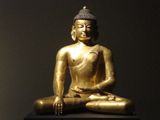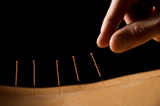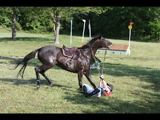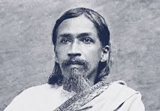Notes on counselling
A journey through pain — a personal therapeutic saga
Abstract
A psychiatrist traces a journey of pain-management through adjuncts selected to simulate the benefits of trance states and voluntary control over physiological parameters and discovers the importance of tapping the body-consciousness and working through the impasse created by the Inconscience.
Pain is an enigma, a reality and a dilemma. It is an enigma because knowingly or unknowingly it overawes us; a reality because, as the Buddha realised, it was inescapable and a dilemma because it can not only stimulate one to surpass oneself but can also be consciously turned into pleasure.
As a psychiatrist, my initial interest in pain was that not only one had physical pain, one also suffered psychological pain. To this, the nihilist added that pain arose from being bound to the cycles of life and death and ostensibly the relief lay in not being reborn again. However, as Sri Aurobindo professed a transformation of life instead of liberation from life, a consideration of such pain was vetoed out of my therapeutic considerations.
The concept of psychological pain proved to be more enigmatic than I had thought. A pure psychological pain in the realms of emotions, Freudian complexes or ethical conflicts would be a psychotherapeutic delight and there were no dearth of psychotherapists, practitioners, counsellors and even shamans and gurus. But there was this more difficult area of psychological factors manifesting as physical pain; the nagging hypochondriac pain, the atypical facial pain, the intractable chest pain, the unbearable headache, the colicky abdominal pain — all of which increased with piles of unfruitful investigations and endless doctor-shopping until one got some relief from a dose of anti-depressants. However, unless such pain was a symptom of depression, it also responded to anti-depressants but not so satisfactorily and without complete remission. Moreover, there were also the pains of a neuropathic nature, usually cervical and lumbar radiculo-pathies, typically presented in women past their fifties, an age when vulnerable to anxiety and depression and the occasional case with painful diabetic sensorimotor polyneuropathy who drop into the psychiatric clinic when there would be meagre relief with the usual interventions.
This led me to wonder if there would really be a situation where a cause for pain existed but no pain was felt even if the subject was not suffering from any condition like diabetic neuropathy which made the perception of pain difficult. It was not difficult to find, our culture abounds with fairs and ‘melas’ where it is usual practice for otherwise healthy aspirants to jump on a bed of thorns and nails in states of trance where one neither feels any pain nor suffers any bleeding. These trance states persisting for centuries provide an important field for consciousness research. It is interesting that once a subject came out of the trance state, which anyway was short-lived, one got back the pain and ability to bleed as before.
It is believed that the absence of pain and bleeding during trance states is mediated by endorphins. Endorphins are endogenous opioids released in the body during stress and react with the brain’s opiate receptors to reduce the sensation of pain. If the stress is more, then high levels of endorphins are released, a reason why long-distance runners start feeling exceptionally happy (the runner’s ‘high’) after they have run for a while. Could we not simulate the runner’s high in pain-relief?
Acupuncture as an adjunct
I postulated that as there was some academic belief that acupuncture exerted its beneficial effects through endorphins, it could be used in a psychiatric set-up where we had instances of psychogenic pain syndromes. Moreover, acupuncturists were already treating a large number of subjects having lower back pain, a condition that does not always satisfactorily respond to drugs or physiotherapy. Besides, three decades back, acupuncture was being used as an adjunct to treat the body aches and insomnia of heroin withdrawal; it was a time when brown sugar abuse had attained nearly epidemic proportions among the youth in Calcutta.
We set up a separate acupuncture section in our psychiatric clinic and we dealt broadly with two types of pain. Cases of acute psychogenic pain like chest pain, acute migraine and tension headaches, atypical facial pain and atypical genital pain were simultaneously put on acupuncture sessions along with psychotropic drugs, usually anti-depressants. Initially, we had started with the older anti-depressants, tricyclics and tetracyclics, we later shifted to the new generation anti-depressants, SSRIs and SNRIs without much difference in efficacy. We had remarkable results. Chronic pain syndromes including those associated with depression, somatisation disorder and variants of arthritis were first given anti-depressants and later put on concomitant acupuncture therapy. We were careful not to give a false impression that we had magical cures, especially as such subjects had had multiple consultations before being recommended for psychiatric consultation. (We also administered acupuncture to other conditions where pain was not necessarily present, in insomnia, generalised anxiety, essential tremor, Parkinsonism, erectile dysfunction, psychogenic urinary incontinence, stress-linked hair-loss and benzodiazepine abuse). Surprisingly, our subjects who had a combination of acupuncture and psychotropic drugs had shown a high degree of compliance and we could render our acupuncture services for nearly twenty years till our acupuncturist retired.
Biofeedback as an adjunct
In chronic pain syndromes, acupuncture as an adjunct did not have as spectacular a success as in acute first-time presentations ; pain would be significantly reduced but needed periodic sessions at least twice a year. This led me to start biofeedback sessions too as an additional adjunct in selected cases. Biofeedback is a device that allows subjects to alleviate their own pain by means of instruments sensitive to small fluctuations in bodily conditions. The subject has to monitor and fine-tune the connections between emotions and health.
Three decades back, we had no biofeedback machines that could be purchased in Calcutta, so we constructed one with teenage enthusiasm after procuring a sketch of the biofeedback circuit. We decided to monitor sweat gland activity through a GSR biofeedback. We had sensors to monitor tiny changes in concentration of salt and water in the sweat gland ducts and translated back the tension into both sound and a flashy computer generated graph. If one were taught to relax, the readings from the electrodes dropped from somewhere like 7 to 3 micro volts. In ordinary life, one is not aware of these small changes but with a biofeedback device, one could do fine-tuning so that one became aware of the ability to voluntarily enhance one’s own blood flow and release tension, abilities that usually are not under one’s voluntary control. Once this ability became an ingrained habit after a dozen biofeedback sessions, one could invoke that behaviour whenever needed, to subside one’s pain.
We used three types of relaxation-training depending upon the receptivity and preference of the subject; progressive muscular relaxation, guided imagery or silencing the mind, a variant of mindfulness. All our subjects received drugs too. We found biofeedback to be a useful adjunct except in cases where the subjects were compelled to lead rustic lifestyles. We continued with this homemade machine for five years till Dr A.S. Dalal gifted me his sophisticated biofeedback kit that he had been using at the Oregon Mental Health Center, USA before he finally shifted to the Ashram at Pondicherry.
The retirement of my acupuncturist, the late Benuda (Benu Dasgupta) also ended the experiment we ran. Retrospectively, I feel that Benuda had a personality that also went a long way in giving a healing touch to his subjects. He had a remarkable life; he grew up at the Ashram in Pondicherry where he returned after retirement for his final departure, learnt physiotherapy at CMC, Vellore, learnt acupuncture from the legendary Dr Bijoy Basu, associate of Dr. Kotnis, sharpened his acupuncture skills in China where he had fled as a Naxalite, but above all he was a dramatist and when as a youngster, he had come away from the Ashram, the Mother had recommended him to the late Mr. Ajit Basu, a devotee and a famous producer of films renowned for his flair in acting. We utilised Benuda’s talent in conducting psycho-drama (drama therapy) sessions where usually a suffering subject was given an opposite role to act out. Reversal of roles brought out psychological conflicts and though in the West, it is conventional to describe extroverts as benefitting from drama therapy, in our Indian setting, introverts responded too. These sessions, as adjuncts also, went a long way in consolidating our therapeutic gains.
By the beginning of the 21st century, Duloxetine (a SNRI agent1) became available as an anti-depressant with some analgesic effects in chronic musculoskeletal pain and surprisingly, methylcobalamin injections also became popular in pain-relief and a sub-group of my patients who had responded excellently to acupuncture also responded remarkably to parenteral methylcobalamin. As increasing evidence points to a conglomeration of factors that produce pain-relief with methylcobalamin — improved nerve conduction velocity, nerve regeneration and inhibited spontaneous discharges from neurons in neuropathic pain states — I wonder if acupuncture provided relief through similar mechanisms!
My association with the Ashram and serious spiritual insights also gave me new insights into pain-management. I saw that physical pain of the most intense and intolerable type could be borne with magnanimity. I also had the experience of knowing selected people who even in the midst of severe pain could carry on in-depth meditation. There were also rare instances when pain after reaching an optimal point could get transformed into pleasure. This was not a masochistic pleasure, as it was not a sensual pleasure, but a pleasure felt first in consciousness and then elicited in the sensory matrix. Even masochistic pleasure at the level of the senses has a message, for in the Indian spiritual tradition, the lower functions are limited, distorted, deviated or perverse representations of higher archetypal attributes. In that sense, masochistic pleasure is a perversion and distortion of the Supreme Bliss-principle that sustains existence. This led me to speculate how physical pain could be understood in terms of consciousness.
Exploring the body-consciousness
In the meantime, I had already been working with consciousness paradigms of health and psychology since the 1990s. We had two overlapping groups. One group had its focus on developing the concept of Integral Health; the other group had as its main focus the building up of a foundation of Integral Psychology (Integral Yoga Psychology). There were basic zones of commonality between the two groups of which the most pragmatic and yet elusive was the work on the body-consciousness. Just as an individual has a unique mindset and a unique emotional representation which are known both to oneself and others (for example, a mathematical mindset may be associated with frequent emotional outbursts), one has also a unique body-consciousness of which one is ordinarily not aware at all. This subtle body-consciousness can be tapped and activated through a technology of consciousness to a point where a mental will can act upon it or the body-consciousness itself can work independent of the mental will (1). Exploring the body consciousness has enormous potentials for personal growth and perfection in life.
When we were probing different pathways to explore the body-consciousness, an interesting incident happened. A middle-aged lady presented herself to us with a rather refractory and intractable shoulder pain that had never been resolved fully. One of the therapists in our team concentrated on finding if the client’s body would give some message; she placed her hand on the affected shoulder of the client and meditated for a few sessions. The therapist shortly had a dream of a person falling from a horse. The next day, she enquired with the client if she had actually ever fallen from a horse and, to her surprise, discovered that she did have such a fall and injured her shoulder when she was a teenager many years back. The body and not her mind had retained that memory. From the consciousness perspective, this was not surprising as the mind is non-local and hence theoretically, it can be spread everywhere. It is just a habit that we point to the head when asked about the location of the mind but we always get our basics wrong as we actually see the sun revolving around the earth though the opposite is the truth.
Emboldened by the power of the body-consciousness, I experimented next with a group session of middle-aged subjects, assuming that most of the people would have some bearable chronic pains and aches even if medical intervention was not warranted. The subjects were first exposed to mindfulness meditation to bring them to an optimal point of concentration. They were then told to visualise a subtle body behind each of their own physical body with an identical configuration. Once a second body was visualised behind the original body, subjects were told to transfer all the sensations, aches, pains and all the other minor involuntary bodily movements, twitches, tremors, stiffness and the like to the body behind which was now no more visually perceived but was simultaneously an experiential phenomenon. On cessation of the session after a few minutes of visualisation, some of the participants reported that their chronic pain in a joint or a nagging ache had suddenly been transferred to the imaginary body behind, giving instantaneous relief. The relief lasted from a few days to a few weeks showing that it is necessary to continue to have similar periodical sessions for sustained relief.
Consciousness-Force
These experiences propelled me to understand from the consciousness perspective why physical pain was so refractory and impervious to our willed suggestions. An exploration from the consciousness perspective, as explained by Sri Aurobindo, reveals that the Supreme Consciousness which creates and sustains the worlds is actually coeval with an inherent Energy or Force so that whatever is intended to be created is immediately and spontaneously executed with accuracy, precision and harmony. If this were not so, the universal harmony would have been missing and we would not have been able to construct laws that govern the universe. Sri Aurobindo calls this complex amalgam as Consciousness-Force or Cit-Śakti. However, during the evolutionary process, there develops a hiatus between Consciousness and Force, between Knowledge and Will, between awareness and action so that a variegated multiplicity develops to make the creation rich and vibrant, teeming with infinite possibilities and potentialities. This hiatus is present at every plane of consciousness. With a progressive evolution of consciousness, this hiatus is gradually worked upon so that at higher levels of consciousness, there is a new synthesis of Knowledge and Will in a new poise heralding perfection in human life.
At the level of the mind, the hiatus between Consciousness and Force is reflected in doubts and preferential thinking, in misplaced values giving rise to the conflict between knowledge and will. This dissonance between knowledge and will results in multiple investigations in chronic cases and doctor-shopping. Cognitive therapists act at this level in individual subjects to somehow make a working compromise, though a real improvement can come only when one lifts the consciousness above the thinking mind to higher cognitive matrices.
At the level of the vital (the emotional repertoire), the gap between Consciousness and Force is maintained by our desire-soul and the turbulence of passions. This is why probably anti-depressants can reduce physical pain in a significant number of cases. There are therapies that work at this level, especially those inspired by Buddhist teachings, though it is difficult to heal this gap unless one has access to the secret Bliss-principle that pervades all existence and forms along with Consciousness-Force and Existence the ultimate Reality-principle of Sachchidananda.
At the level of the physical consciousness, the Consciousness and Force are not as differentiated as at the planes of the mind and vital and the hiatus is filled up with inertia or tamas arising from the Inconscience. This is not surprising as evolution begins from the Inconscience and the physical consciousness unfolds before the vital and the mind manifest. The resistance offered by inertia against the transmuting changes of the higher planes makes it difficult for the human will (belonging either to the subject or to the therapist) to suggest or impose itself on the physical plane. That is why one finds it difficult to cure a purely physical problem like pain by one’s willpower or through any form of psychotherapeutic suggestion unless temporarily one’s focus is shifted elsewhere during a hypnotic trance which of course is successful only in highly selective subjects open to suggestions. Sri Aurobindo explains that:
“fundamentally, all pain and suffering are the result of an insufficient consciousness-force in the surface being which makes it unable to deal rightly with self and Nature or unable to assimilate and to harmonise itself with the contacts of the universal Energy; they would not exist if in us there were an integral presence of the luminous Consciousness and the divine Force of an integral Being (2).”
It follows therefore that the conquest of physical pain requires a tapping of the hitherto concealed body-consciousness coupled with a decisive working through the inertia of Inconscience, an endeavour that needs a new technology of consciousness to be developed. That is the new challenge posed to the practitioners of the ‘greater psychology’ of the future.
References
1. Sri Aurobindo. Birth Centenary Library, Volume 22. Pondicherry: Sri Aurobindo Ashram Trust; 1970, p. 324.
2. Sri Aurobindo. SABCL, Volume 18. 1970, p. 600.
Dr. Soumitra Basu, a practising psychiatrist and member of SAIIIHR, is the Director of a school of psychology, Integral Yoga Psychology. He is also one of the editors of NAMAH.
Share with us (Comments,contributions,opinions)
When reproducing this feature, please credit NAMAH,and give the byline. Please send us cuttings.








